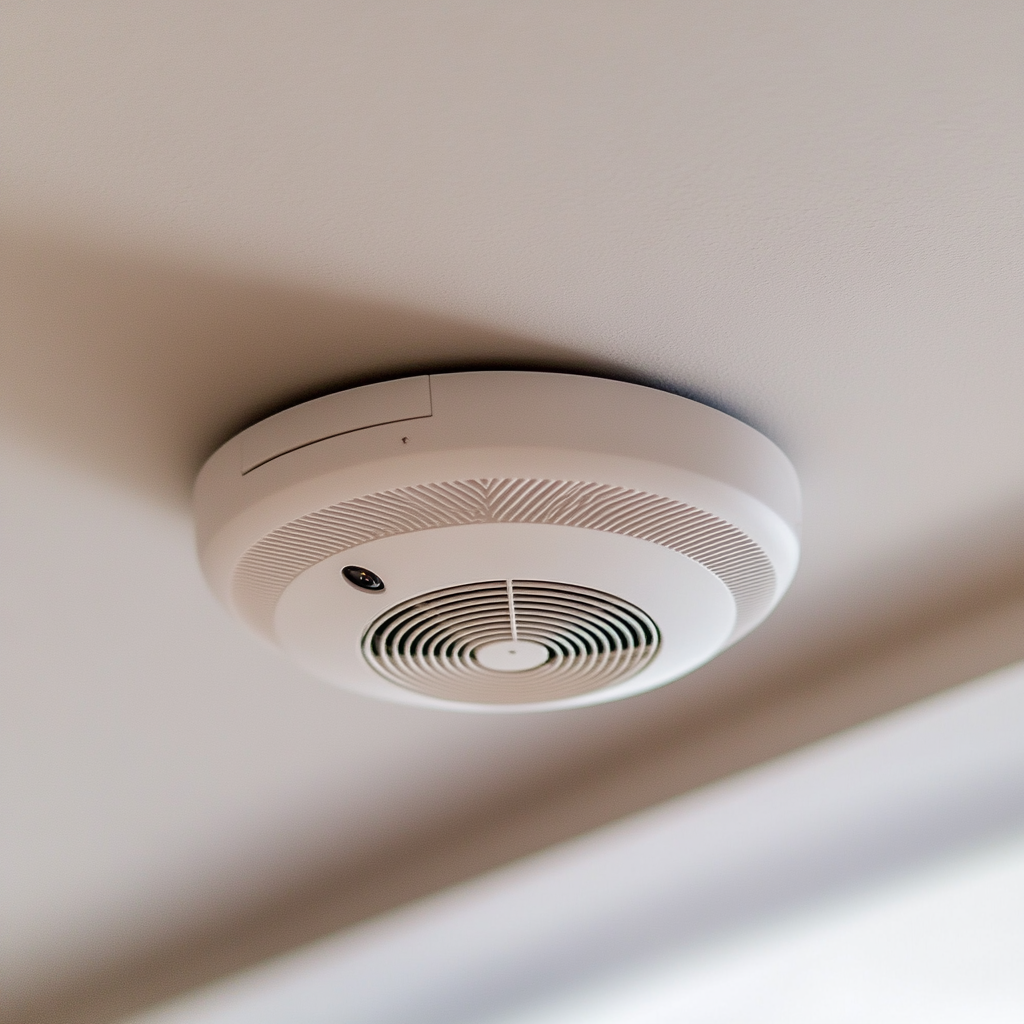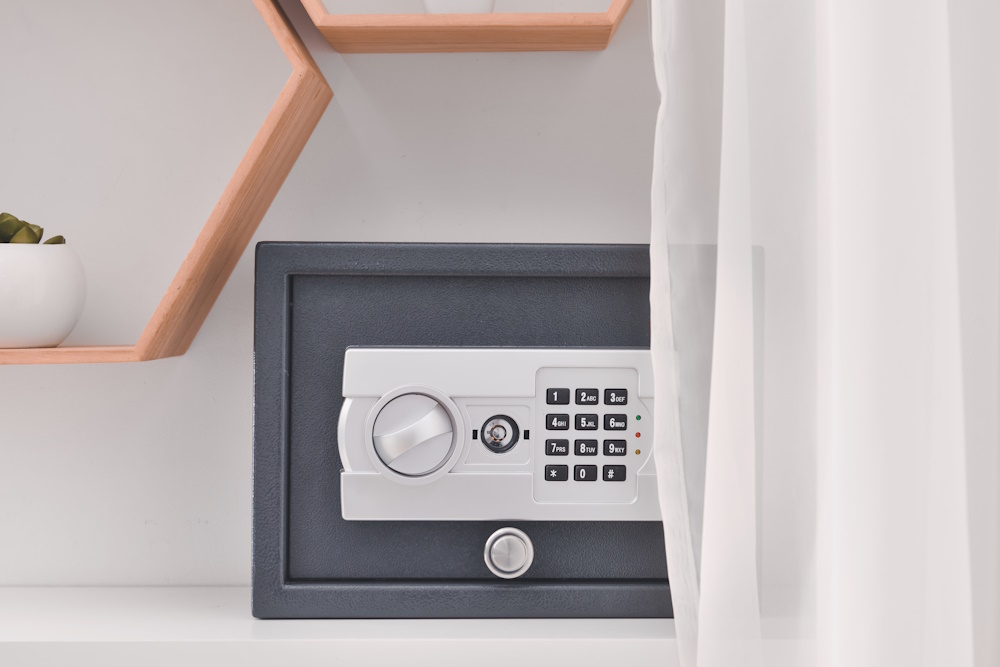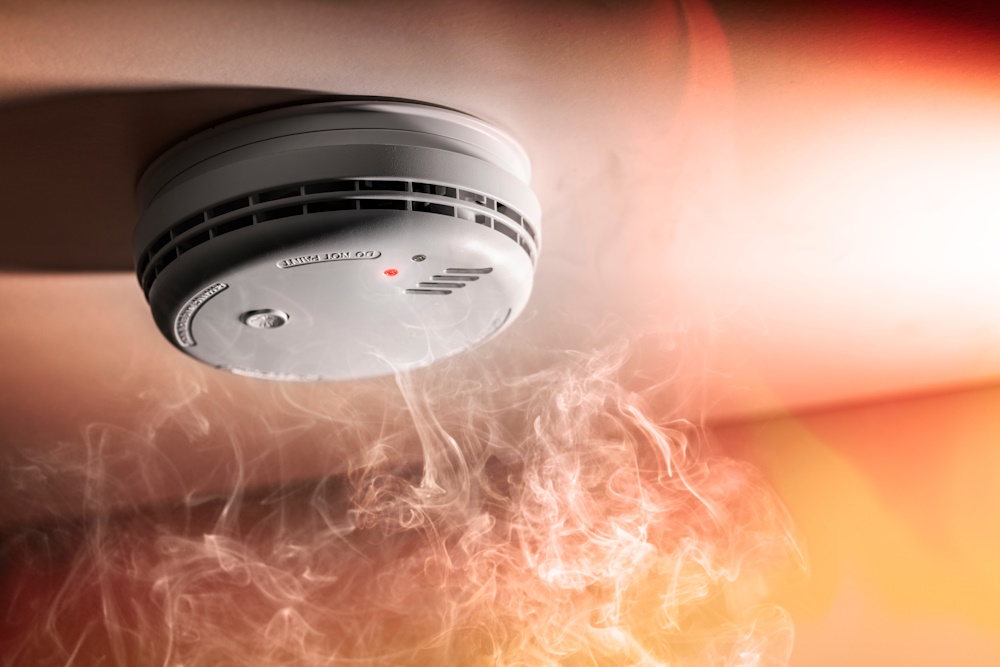There’s plenty to worry about when you own a home. That said, some worries are more urgent than others, and topping that list are factors that impact the safety of those who live under that roof. But while some of those concerns are widely acknowledged and discussed, some are completely unknown to many until they buy their first home.
It’s a safe bet that you had fire drills when attending elementary school, for example. But we doubt you did any for carbon monoxide alarms.
If you’re reading this, though, it’s also a safe bet that you’ve recently been made aware of this particular risk factor, and want to take steps to address it. So let’s talk about carbon monoxide, why it’s a concern, and how best to protect yourself and others from this danger.
Why Carbon Monoxide Detectors Are Essential for Home Safety
First, a simplified science lesson. Carbon monoxide (CO) is a gas, produced as an exhaust byproduct when we burn fuel. CO molecules consist of a single carbon atom, and a single oxygen atom, hence the name. The gas is similar to carbon dioxide (CO2) which consists of a single carbon atom paired with two oxygen atoms.
Normally, burning fuel produces CO2. In fact, it’s even that way with our metabolisms: that’s why animals (such as humans) exhale CO2 as a waste product. What makes CO different is that it’s produced when the fuel doesn’t get fully burned, something smarter people than us refer to as “incomplete combustion.”
The end result of this is CO which—for complex reasons we won’t get into here—is a lot less stable than CO2. Which makes it kind of problematic for living things, like humans.
Where Can You Find Carbon Monoxide?
CO isn’t produced naturally. Even though CO and CO2 can come from the same source, not everything that produces CO2 also produces CO. Living things, for example, only produce CO2. CO is produced by other forms of burning, from a wood fireplace, to a gas stove, to a car’s exhaust.
In other words, you can find it anywhere in or around your home that burns fuel to generate heat or power:
- Wood or gas fireplaces
- Gasoline and diesel fuel engines (cars, trucks, ATVs, generators etc.)
- Gas and charcoal grills
- Gas-powered stoves and dryer units
- Propane heaters, gas furnaces, water heaters, and other heat-generating appliances
Why Is Carbon Monoxide a Problem?
CO is problematic in three big ways. First, humans can’t breathe it. Just like CO2, we can ignore it in small amounts (which is why proper ventilation or using appliances/vehicles outside doesn’t present the same risk), but it can quickly crowd out breathable oxygen when vented into a confined space.
Unlike CO2, however, we have no natural way to detect carbon monoxide buildup. We have certain biological systems built-in to alert us if we’re breathing in too much carbon dioxide. But we can’t do the same with CO. To us, it’s odorless, colorless, tasteless—it’s functionally invisible.
Worse still, because of its unstable nature, CO exposure can have lasting consequences. CO2 can displace air in the room, but retreat to fresh air and you’re good to go. CO can displace breathable oxygen inside the body, and can cling to cells, preventing proper respiration even after the fact.
In a nutshell, CO is harder for humans to detect, presents more urgent and lasting danger, and can have long-term side effects. Under the wrong circumstances, your life could be at risk, and you’d have no way to know.
Which, in essence, is the whole reason for a carbon monoxide detector.
Key Features to Look for in a CO Detector
There are various carbon monoxide detectors on the market, from simple battery powered sensors to sophisticated smart devices that integrate with a wider home protection system. At the most basic level, any functional detector will serve its purpose, provided it’s installed properly and maintained as needed.
Depending on your situation, though, you may prefer a different style, brand, or model based on your budget and use case. Here are some main points of differentiation to consider as you shop around.
Price
At the risk of providing unnecessary explanation, you’ll find quite a spectrum when it comes to price. Economy-grade detectors tend to be relatively inexpensive and simple to install. It’s common to see products around the $20 range, and some can be purchased in bulk. These tend to be discrete, battery powered units.
On the opposite end, more complex units are available for those who find them worth the bump in price. Many of these models have additional functions (such as smoke detection), can connect to security systems or smart home apps, and so forth. It’s not uncommon for models in this range to be priced well over $100.
Power
Just like smoke detectors, CO detectors require power to function. The most reliable options, again like smoke detectors, are wired in directly, with a battery for backup power in the event of an outage.
More portable, easy-to-install options may run solely on battery power, which will require regular replacement to ensure functionality.
Functions
At the risk of stating the obvious, the most basic function of a CO detector is what it says on the tin: detecting carbon monoxide. If there’s a baseline pass/fail qualification for this product category, it’s whether or not it fills that function.
Here’s the part about that which is less obvious: smoke and carbon monoxide are not the same thing. And despite some similarities in function and design, a detector of one will not necessarily perform the function of the other. In short, you need detectors that specify they can identify the presence of the hazard in question, so you’ll possibly need to buy one for each.
Some models do cover both hazards, though. Dual-function smoke/CO detectors are increasingly common, but you’ll want to be aware of placement if you buy one. Smoke detectors are best placed in areas of the home where fires are common (with the kitchen being the prime example), and placed on the ceiling to ensure proper detection with minimal false alarms.
CO detection is a little different, and benefits from slightly different placement (often on the wall rather than on the ceiling). To make sure you’re getting the best protection, follow the instructions in the product manual on how and where to install these dual-purpose detectors.
Beyond smoke and CO, some units come with additional bells and whistles. Many are IoT ready these days, with quite a few designed to integrate with wider home safety systems (home security, home monitoring, smart home management, etc.). Most homeowners don’t need that much from their detectors, and can settle for something more modest. But if you already use a security or smart home system, it might be worth a look.
Alerts
Closely tied to function is alerts and alarms. At the most basic, a CO detector will detect CO, and sound an audible alarm to warn occupants of the home, not unlike smoke detectors.
Be aware, though, that most CO detectors don’t sound a blaring, ongoing klaxon like fire alarms. They typically have a beep pattern to indicate CO alarm, or a maintenance issue (batteries, replace unit, etc.). So check your unit’s manual for specifics.
Beyond the standard alarm, though, more sophisticated devices might integrate with a smart home app, and push alerts via that system. They may even be able to send text notifications to your phone.
For detectors that are part of a comprehensive safety/security system, they may even be designed to alert the company that monitors your system. This may prove critical for cases where occupants are asleep or incapacitated, and emergency services need to be notified.
Compatibility
Finally, you’ll want to consider compatibility. Briefly, this is an issue any time you’re dealing with internet-connected or “smart” devices, as not all hardware/software pairings play well together.
Even for more low-tech models, you may run into issues related to how the unit is connected or installed. It’s a safe bet that a wired unit you grab from a local retailer will be built to connect to standard wiring where you live. But if you order from an online retailer, have it shipped from an international source, or similar, you may have need for an adapter, or a model suited to your location.
What’s more, buying a home is (to borrow an overused metaphor) a lot like boxed chocolates. Sometimes you have no idea what’s inside until you actually open it up. For older homes, homes purchased from aspiring professional remodelers, and the like, it’s possible that mounts and connections that should be present are not (or are patched over).
Barring anything else, you can always opt for battery-operated detectors, at least until you can arrange for a more intentionally implemented solution.
Smart vs. Traditional CO Alarms: Which Is Better?
Honestly, this is primarily a matter of preference, and budget. Smart devices always carry a larger price tag than their analog counterparts, and not everyone wants or needs everything in their home connected to the wifi. In many cases, more traditional CO detectors will provide all the functionality you need.
With that said, internet-enabled systems do have at least one advantage that helps them stand out for a particular use case: they allow for remote monitoring and alerts.
It’s not relevant to everyone, but some homeowners often find themselves traveling or otherwise away from their residence for notable periods. If the house is completely empty during these jaunts, then smart detectors only really make sense if they’re part of a larger system (such as those that can detect and report issues like fire and flood). CO doesn’t hurt your home, just things that live inside, so when the structure is vacant, it’s not an urgent issue.
However, if you have people or pets that will be home while you’re away, a smart CO detector may be the best way you have to protect them from carbon monoxide poisoning.
Final Recommendations
It’s a solid best practice in most situations to follow the manufacturer’s instructions and guidelines for installation, maintenance, and use of an item. And since specifics will differ some from unit to unit, we’ll defer to that documentation so that we don’t provide advice that conflicts with it.
What we can do is highlight particular details to check, so you know you got it right. That way, you’ll be properly protected by the product you bought.
Pay special attention to instructions and guidelines regarding:
- Placement and installation
- Connecting the unit to power (wires, batteries, etc.)
- Integrating the unit into your smart device system (if applicable)
- Testing and maintenance
- Estimated lifespan and replacement timeframes (including batteries)
- Beeps, chirps, and alerts (to know what’s an alarm, what’s a maintenance reminder, etc.)
Ultimately, monoxide detectors are, like many safety and security devices, a bit of a consumer’s paradox. The best-case scenario is one where the purchase will feel like “money well wasted,” since there was never an emergency that would provide the product a chance to do its job.
But, like all safety precautions, it’s a matter of turning “what if?” into “just in case.” And in this case, a dependable CO monitor can help you breathe a little easier.
Now, here’s our top three picks for CO detectors to send us off:
- Best Budget Option: First Alert CO400 CO Detector
- Best Multi-Funciton Option: Kidde KN-COEG-3
- Best Premium Option: Onelink Smoke/CO Detector
Check us out at Homeowner.org for more on home improvement. We’re here to be your ultimate resource as a homeowner!



